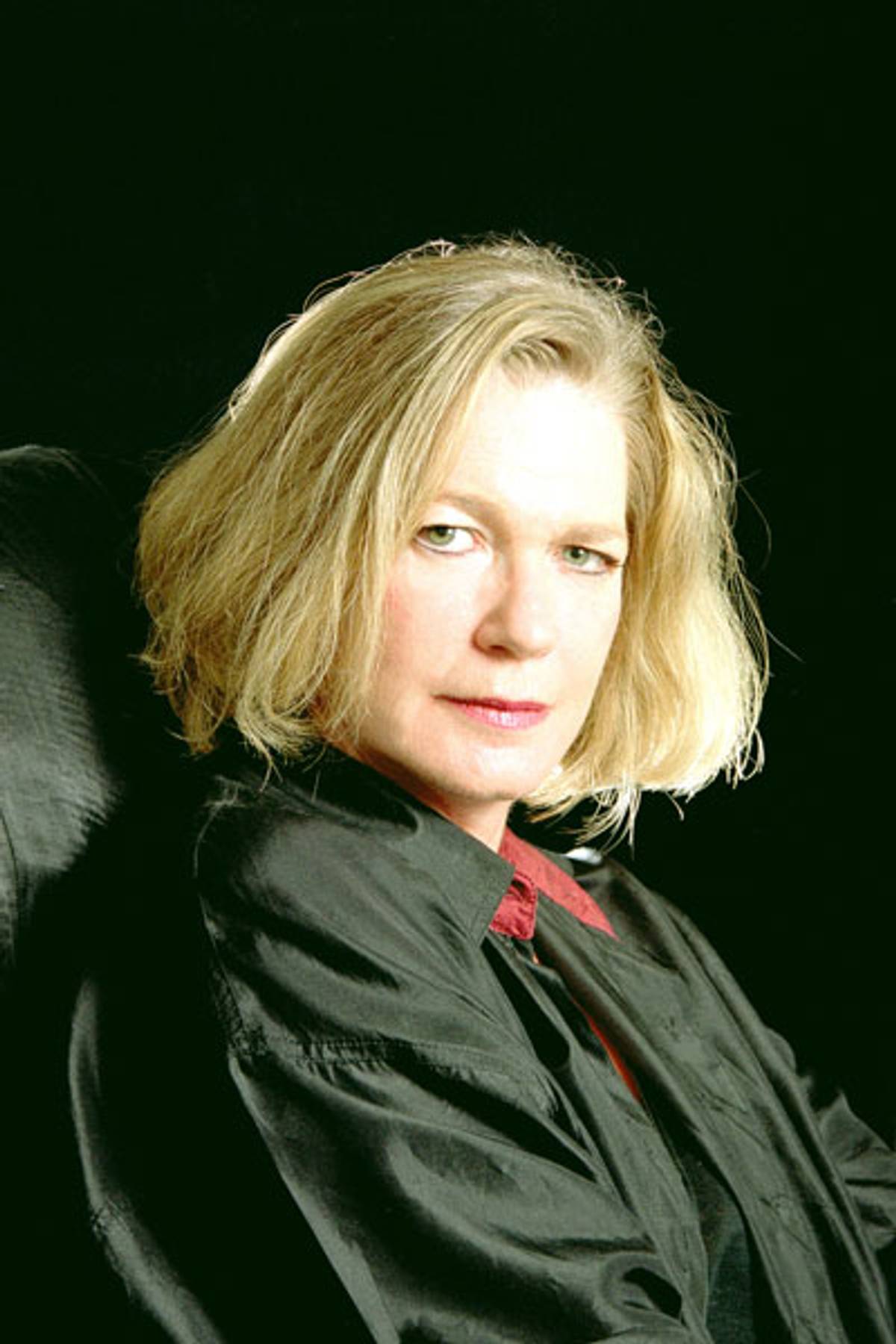The Brilliance of Batya Gur, Israel’s Greatest Detective Author
The late writer’s best work reflects the larger anxieties of a society trying to shield its founding ideals against threats from hostile populations




Before The New Yorker became a social-media babbitt, the magazine not infrequently published eccentric works that documented the collision between a writer’s sensibility and peculiar Americans. Which is to say, that reporters sought out subjects who because of their circumstances or disposition were less self-conscious and often revealed something important but not obvious about their time and place. Of his true-crime reportage between the late 1960s and early ’80s, Calvin Trillin wrote, in the introduction of Killings, the book that collected the best of those New Yorker pieces from a bygone era, “the place was the context for the killing, and the killing was an opportunity to write about the place.” It was after a murder that Trillin could ask questions and see human behavior in a rare light, “when someone dies suddenly [and] the shades are drawn up.”
Trillin didn’t squander the opportunity. Yet my hunch is that his understanding of the possibilities inherent in certain kinds of reportage did not originate with him or with his peers, but was precipitated by William Shawn, the magazine’s editor, whom J.D. Salinger once described as the “lover of the long shot.” Sustained observation of the spontaneous activation of the rituals, myths, habits, and institutions that commingled at the moment of someone’s sudden death would, as it turned out, accumulate a series of specific and vivid local manifestations of a nation, in the early ’70s, late ’70s, early ’80s, when its own sense of itself flipped inside out.
It’s in a similar fashion that accumulated investigations of death are revealing of life in Israel, by way of the detective novels of Batya Gur, the Israeli writer who penned other novels and one work of social criticism but who made her name on a series of six books that followed the professional and personal exploits of Michael Ohayon, her protagonist. The chief detective of the Jerusalem police, Ohayon was, Gur once said, “a better edition of me.” Perhaps it is this dynamic between author and her cultivated fictional self that elevates Gur’s project above the plane of Trillin’s true-crime reportage. More than the sensual drama of a particular era in Israel, Ohayon’s murder investigations serve as a narrative interrogation of the Zionist undertaking, such as it was, or as Gur saw it, during the late hours of the 20th century.
In each of the six books, Gur dispatches Ohayon into a tightknit, insular community where the murder of one of their own, and with one or more of their own somehow implicated in the death, threatens to collapse the foundation of that community. Not unlike the settings of Frederick Wiseman’s documentaries, Gur’s communities are stand-ins for Israeli society writ large, whether a kibbutz, chamber orchestra, university literature department, or a psychoanalytic teaching institute.
Ohayon’s renown as a “star investigator” grows with each case, and his photo is frequently splashed across the pages of the Jerusalem newspapers as he climbs up the ranks. Gur’s plots propel along swift, cerebral currents that mimic Ohayon’s “unusual style of detective work,” born of his deep need “to become part of the environment that he was investigating, to sense the subtle nuances of the murdered person’s world.” Tracking Ohayon’s obsessive infiltration into the “essence of things,” Gur thus uses the occasion of a sudden death to scrutinize the vulnerabilities of a society laid bare by the violence and brutality of human relations.
***
After her first career teaching high school literature, Batya Gur’s life as an author was an unfortunately short second act, publishing her first novel at the age of 39 and dying from cancer at the age of 57, in 2005. Raised in Tel Aviv by Polish parents who arrived in Israel as Holocaust survivors, Gur, a graduate of the literature master’s program at Hebrew University, once said that she modeled Michael Ohayon, who turned to police work after abandoning a promising career in academia, on her own experiences: “He grew like me, slowly and laboriously, until he found his place.”
Gur emerged with her bestseller debut, in 1988, when detective fiction written in Hebrew had been all but dormant for five decades. As a consumer product for popular entertainment, the crime fiction of the 1930s was published in small books on cheap paper intended to be discarded, like a periodical, after it was read. Dismissed in their day by some critics as a frivolous abasement of the language, others supported the disposable tomes as an effective means to promote basic Hebrew literacy. The enterprise did not sustain itself much past the decade, and save for the occasional children’s book, readers of crime fiction had to turn to translations of English works to get their fix.
Sporadically appearing in Hebrew, the best of the postwar American detective fiction was often in some form of dialogue with the charged social undercurrents shifting the larger moral order in the United States, pushing and pulling the general consensus of what was still sacred and what had become profane. Writing under the pen name Ross Macdonald, Kenneth Millar built upon the genre conceits and literary methods of his forbears, Dashiell Hammett and Raymond Chandler, to create his own series of 18 novels featuring the private eye, Lew Archer, a moody, brainy loner trying to separate right from wrong in the sandblasted tequila haze of midcentury Southern California.

There were some minor American detective fiction writers in the 1960s who explicitly featured Jewish characters, at a time when the depth of popular knowledge about Jewishness rarely plunged deeper than the descriptions of the chosen people whispered into the ear of Eva Marie Saint by Paul Newman in the film Exodus. Those books, like Harry Kemelman’s Friday the Rabbi Slept Late, trafficked primarily in first-base conflicts of Jews in America, the cultural Jews seeking religion, diaspora Jews lonely and untethered, the rare Jewish convert unsure of what their newfound faith amounted to in a secularized society occasionally hostile but more or less ambivalent about Judaism.
Perhaps it was the lowly associations with genre work that led the best American Jewish writers to leave the innovations in detective fiction to Ross Macdonald and his progeny while Bellow, Roth, and Ozick vigorously expanded the possibilities of highbrow literature with new kinds of characters speaking in strange vernaculars that helped define and shape American Jewish identity, assigning themselves the task of reaching beyond the limited confines of a literary genre’s readership, to become, for better or worse, part of the larger American cultural conversation.
It wasn’t until the 1980s that detective fiction earnestly returned to Jewish themes and characters—first in the States and then not long afterward in Israel, and notably in both nations at the hands of female authors. Batya Gur was the most famous of the Israeli crime fiction writers, her books all bestsellers translated into English, French, Spanish, and German. Her rise coincided with a popularization in Israel of other cultural products that had long made money in the West, from pulp novels to consumer goods to a middlebrow buffet of films and television. Women picked up the mantle of serious crime fiction in Israel largely because it was there for the taking: Like male fiction authors in America, their Israeli counterparts didn’t value the possibility of genres outside the hallowed cannon. Much to the credit of Gur and her cohort, they realized the potential for detective fiction to engage with the social questions of the day.
Women picked up the mantle of serious crime fiction in Israel largely because it was there for the taking.
Unlike Ross Macdonald’s free-floating, solitary Lew Archer, Gur’s detective, Ohayon, is an institution man, respectful of his own, of others, striving for promotions, deferential to leaders, occasionally sentimental, with a firm but not insoluble belief in the sanctity of a group’s code of conduct and declared intentions. When a subordinate chafes at judicial procedures that slow up their investigation, Ohayon snaps back, “Don’t knock it. … You want to live in a place like Argentina? It’s a price we have to pay.”
Both Archer and Ohayon are protective of their independence and their time alone, and define their identity in part by how they maintain the space between themselves and their surrounding communities. But where Archer sides with the drifters and outcasts, defaulting to a cynical dismissal of the inherent hypocrisy of a society failing to achieve its ideals, Ohayon sees himself inexorably tied up in the common plight, breathing the air of shared tragedy. When he and a witness first come upon a dead body, brutally murdered, they retreat to a bench, two strangers smoking a cigarette, the trauma of the encounter already binding them together, “their faces clearly reflecting the secret solidarity of people who had not yet succeeded in putting up the barrier against the feeling of fear, which was stronger than anything else.”
Arriving in Israel at the age of 3, Ohayon is a Moroccan immigrant sensitively tuned to his place in the social pecking order, insecure about his relationship to the nation’s Ashkenazi population, the people he finds to be “full of prejudices about … people whose parents didn’t come from Europe.” As a character forged in the heat of the Israeli-Palestinian conflict as it inches ever closer to the first intifada, Ohayon is a capable vessel, holding a set of conflicted emotions and intellectualized rationalities: the loner who loves the reassurance of the group embrace; an immigrant racing up the prejudiced social ladder, but the very particular ladder of state power; a celebrated obsessive who must uncover the motive for murder, even if it means absorbing the thoughts and feelings of people damaged by power, greed, or hate. Ohayon, particularly in the early books, is something of a modern everyman of the Middle East, walking over ancient stone in pursuit of a better life for himself, and law and order for his adopted nation, even as chaos rattles the streets.
***
Later in life Gur was an increasingly outspoken critic of an Israel she viewed to be drifting rightward, too militant, too conservative—her only nonfiction book made a harsh appraisal of settlers, whom she found to be suffering from a “nearmessianic mania”—and the later Ohayon books, like Murder in Jerusalem, published posthumously in 2006, which delves into the murders of Egyptian prisoners during the 1967 Six-Day War, suffers from the didactic weight of its politics: solemn and polemical where once her arguments relied instead on metaphor and her aesthetic acumen to communicate suggestively. And while the latter books show off Gur’s mature polish and taut structural technique, the initial books, if at times shaggy, are more enjoyable company, because they are infused with Gur’s own exuberant discovery of the possibility of her project.
This is true especially of Gur’s debut, The Saturday Morning Murder, which has Ohayon investigating the murder of Eva Neidorf, a prominent psychoanalyst at the Institute for the Jerusalem Psychoanalytic Society. Founded in the late 1930s by a group of analysts who fled Germany when, as Ernst Hildersheimer the current leader explains to Ohayon, “it was already clear what was going to happen,” the institute became one of Jerusalem’s leading psychoanalytic teaching clinics. Incredibly competitive in their selection of candidates, with a long and arduous training process, the institute’s members rigorously adhere to a set of professional standards that bring to mind, for Ohayon, the medieval guilds, which he’d studied as a doctoral candidate destined for Cambridge before he abandoned the academy for the police force.
In service to the city’s ailing general population, the institute helps Israelis solve their most pressing and complicated problems. When it becomes apparent that the murderer is, in fact, a member of the society, Hildersheimer informs Ohayon that they cannot continue this vital work until the murderer is caught. “Too many people depend on us to be able to afford not to know which of us is capable of murder,” he tells Ohayon.
The core tension of the case, with a suspect whose life purpose is to restore other people to full health but who is also capable of murder, provides Gur, in its metaphorical potency, ample opportunity to take on the larger anxieties of a society trying to square its own founding ideals—a socialist desire for peace and common refuge—against threats from hostile populations within and from outside the community’s borders. For Ohayon to solve the murder, he methodically documents the history, bylaws, and working habits of the institute and its members, “to obtain a full picture, to see everything concerning human beings as part of an overall process, like a historical process possessing laws of its own.”
Rightly, Ohayon’s presence signals something odious to the members of this esteemed group, who had once fervently believed in their own collective commitment to help all who sought their salubrious counsel. Overcome by the implications of the detective’s purpose, one member struggles against the “tremendous rage swelling up inside of him,” as Ohayon has “begun to represent in his eyes the breakdown of all rules.”
Gur deftly imbues the novel with the reasonable paranoia of the society’s members—instigated by the fear that one of their own would want to harm them, which suggests the future of the society could be imperiled. For Hildersheimer and the institute’s old guard, the notion that they could nurture a member capable of murder means the destruction of “the Institute, its inner life, the sense of belonging our people feel toward it.” Much like Orly Castel-Bloom’s later Human Parts, where severe, abnormal winter storms in Jerusalem become the daily atmospheric menace that parallel the fraught danger of the second intifada, Ohayon’s investigation into what went rotten at the institute echoes a wider social distress about crumbling idealism, of what kind of belonging is possible under the threat of some internal, self-destructive force.
The evidence mounts and Ohayon is soon interrogating a colonel, the “military governor in the territories,” a patient of the slain analyst. With a sly sense of humor, Gur reveals that the colonel, “who looked like a TV advertisement for the Israel Defense Forces,” had sought professional help because while in the middle of a passionate love affair he’d suddenly become impotent. But it’s not the morality of the affair that sabotages the seemingly powerful man; rather, he bears witness to his own lost vitality when the difficulty of the territories becomes too much. “It’s a simple question of humanity, of how far you’re prepared to play God,” he tells Ohayon. “And I’ve never been much good at that.”
Realizing that the colonel didn’t murder his analyst, Ohayon—who will later lose the fierceness of his convictions—holds tight here to his belief in the dignity of public institutions, saying he’ll do what he can to keep the governor’s involvement in the case quiet—not “to protect you but out of concern for the reputation of the army and the military government.”
The actual murderer is eventually apprehended, their motives not tied up to larger political themes but appropriately personal and selfish. It seems possible that the analytic society will carry on, though as one astute member realizes well before the case is closed, it will never be the same again. “The door, which had always been closed against the world, the door that protected what [he] privately thought of as the most protected place in the world, remained open … and through it broke things that did not belong, things that up to now had been, at most, part of the fears and fantasies of patients. Now they had come true, and nothing belonged to anything anymore.”
For Ohayon, discovering what had broken through the door of the institute is not in and of itself a satisfying accomplishment, there’s a “joylessness of the victory,” as he must reconcile himself to the notion that the force isn’t foreign, or rare, or unfamiliar. Rather, what corrodes the institute is the same force that unravels all of our best intentions, the mundane materials of life itself.
Sean Patrick Cooper is a journalist who has contributed narrative features and essays to The New Republic, n+1, Bloomberg Businessweek, and elsewhere. His first book, The Shooter at Midnight: Murder, Corruption, and a Farming Town Divided will be published in April 2024 by Penguin.